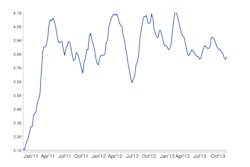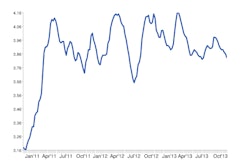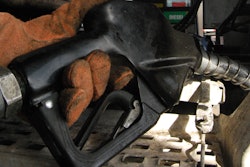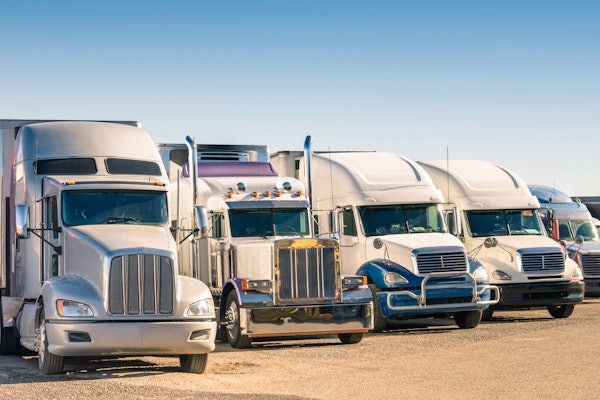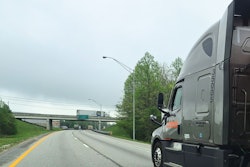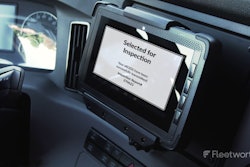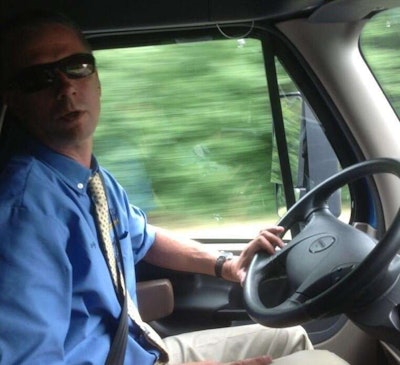 Click here to see a video log of Henry Albert giving further insight into his fuel-saving practices in a video compilation of highlights from his drive with Jack Roberts.
Click here to see a video log of Henry Albert giving further insight into his fuel-saving practices in a video compilation of highlights from his drive with Jack Roberts.Are we about to pass the 10-mile-per-gallon threshold in long-haul trucking? Owner-operator Henry Albert certainly thinks so.
Albert, owner of Albert Transport out of Mooresville, N.C., is a member of Freightliner Trucks’ Team Run Smart. These are five drivers who each represent a positive aspect of the owner-operator business and lifestyle.
Albert, Overdrive’s 2007 Trucker of the Year, is the “face” of Team Run Smart when it comes to proving and promoting Freightliner’s fuel-efficient heavy trucks to the industry and the public at large. A big part of that involves the new Cascadia Evolution that Freightliner matched with Albert in November.
I rode for two days with Albert. We left Overdrive’s headquarters in Tuscaloosa, Ala., bound for the Great American Trucking Show in Dallas. Albert was scheduled to show his highly aerodynamic tractor-trailer combo and spread the word on what he’s learned and how other truckers can apply his lessons in their day-to-day operations.
My goal in riding with Albert was to verify that he was getting 10 mpg in his daily operations. As it turned out, he’s not. He’s actually getting 11 mpg.
Or at least he did on our run to Texas, with a final tally of 11.2 mpg. Pretty impressive, considering our GVWR of about 62,500 pounds.

Sometimes – on a good day, when everything’s going right – Albert’s getting 12 mpg or better. On the other hand, his fuel logs show that some days he drops to the 9-mpg range. His average since he’s had the truck is a solid 9.5 mpg.
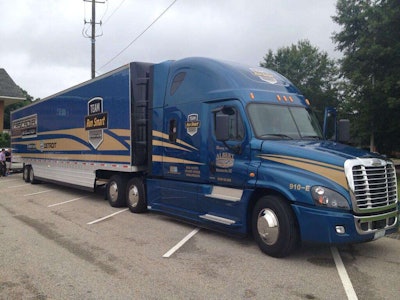 Henry Albert’s Freightliner Cascadia Evolution and Utility 4000 D-X Dry Van feature several standard and cutting-edge fuel-economy components or design elements. Among the notable ones:
Henry Albert’s Freightliner Cascadia Evolution and Utility 4000 D-X Dry Van feature several standard and cutting-edge fuel-economy components or design elements. Among the notable ones:• Special windshield for better airflow
• Body-integrated antenna
• Hubcaps at all wheel locations
• Cab extenders with filler piece between the side skirts and the extender body
• Lower front air dam
• Hood-to-bumper filler piece
• Elliptical-shaped mirrors
• Chassis side-fairing enhancements
• ATDynamics TrailerTail
• Wide-base single tires
A former racecar driver, Albert had to discipline himself to run slow. He’ll still go 70 mph if his business requires it, but most days he’s cruising around 62 mph, letting his integrated Detroit Diesel drivetrain and DT12 transmission do most of the work.
“Just because the speed limit is 70 mph, you don’t have to go that speed,” he told me. “People say it’s unsafe, but it’s not. I settle into the right-hand lane, set my speed and stay there. I’ve adjusted my routes and timetables to meet this new schedule, and it works out very well – especially considering the fuel and money I’m saving.
“I’m going to drive for 10 hours a day, no matter what. If another driver finishes the same 10-hour day and he’s another 60 or 80 miles down the road, great. But what has he really accomplished? And was that extra 60, 70 or 80 miles worth the money that went out his smokestacks? I don’t think so.”
During the drive, I updated readers on our progress and current fuel economy numbers. A few naysayers sneered that Albert is using a special aerodynamic truck to log those numbers.
“Of course I’m using a special truck to achieve these numbers,” a frustrated Albert responded. “That’s the whole point here. But more than that, I’m actually using the truck to the fullest extent of its potential. I’m buying into the concept, and I’m making it work. But a lot of people don’t care about that, because they’d have to change the way they do things, or they wouldn’t look ‘cool’ blasting down the highway. OK, I don’t look as cool driving down the highway, but my wife looks pretty cool in the Mercedes-Benz I bought her. So I’m OK with that.”
Albert then fumbled behind his seat before producing a small bit of paper towel. After noting that birds can use it for nesting or, failing that, it’s quickly biodegradable, he asked me to toss it out the window and track its progress. As he predicted, it perfectly shadowed the rig’s lines in a smooth trajectory past the TrailerTail.
“You can see for yourself how clean the airflow is,” he said. “That’s where fuel economy comes from.”
Albert said he’s made fuel economy a game. He challenges himself daily to post high numbers. He’s become a keen observer of conditions and, where possible, tailors his day to take them into account. He watches the trees to see if he’s lucky to have a tailwind. Worse than a headwind is a side-gust, hitting the tractor-trailer gap hard and creating an aerodynamic penalty. He tries to avoid wet and hot roads because they add rolling resistance.
While he can’t always work around such conditions, there are other things he can control that most operators don’t consider – such as his mudflaps. He pulled them off the truck and trailer and paired them down with a circular saw to make certain they weren’t protruding into the slipstream.
He plans his rest stops at high elevations. His reasoning: It’s easier to get his rig back up to speed going down a grade as opposed to burning extra fuel trying to accelerate uphill.
Albert knows he’s a little extreme in his fuel economy quest, but he said his habits can be adopted by drivers looking to improve their bottom line – or perhaps win a fleet fuel economy challenge.
“If you’re getting 5.5 mpg now and you can raise that number to 8.5 mpg but don’t, it’s like throwing a new Cadillac away every two years,” he said. “There’s simply no reason not to do everything in your power to improve fuel economy.”




